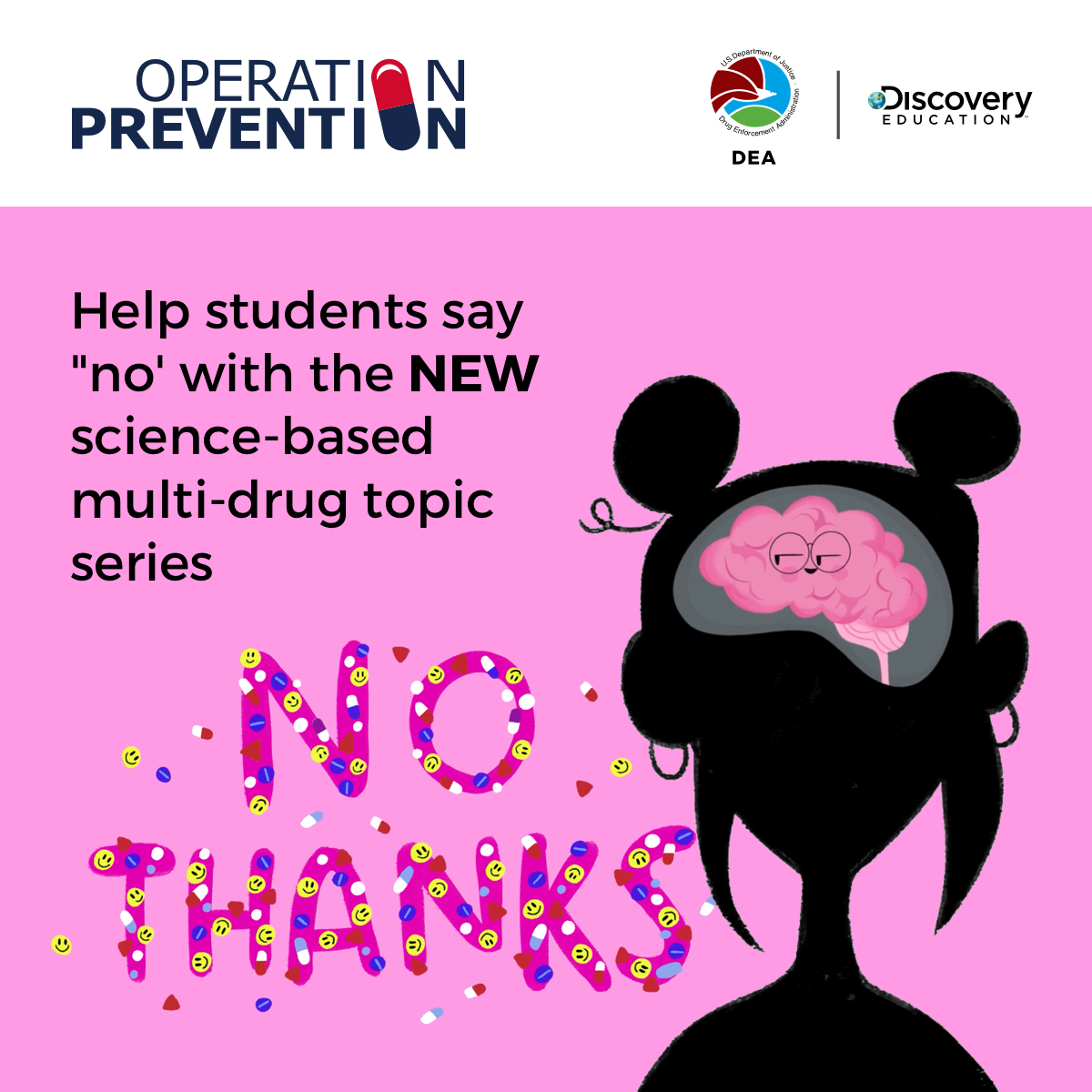How to Keep Students Drug Free and School-Focused
Cathleen Drew, prevention program manager, community outreach and prevention support at DEA

As people continue to practice safe social distancing, the isolation of remaining at home may drive some to seek escape in dangerous ways, according to the Association of American Medical Colleges. Recent research finds that in most states across the United States, drug overdoses are on the rise, and kids are not exempt from this temptation. Last month alone, 60% of students ages 12 and up used some sort of illicit substance, according to research by SAMHSA.
Wherever learning may be taking place, empowering students to proactively choose a healthy lifestyle requires understanding the impacts of drug misuse. Operation Prevention – a program from the Drug Enforcement Administration and Discovery Education – has been expanded to include no cost digital resources that focus on stimulants, depressants, inhalants, hallucinogens, steroids, and marijuana, in addition to opioid prevention.
Building upon the award-winning suite of resources grounded in multiple learning standards, the new content offers students in grades 3-8 short videos explaining the dangers of various substances and providing proactive ways to say no. In addition to the fun and informative videos, there are dynamic activities for each topic, plus an educator guide for the whole series. Centered around the idea of protecting the brain and body, the resources seamlessly integrate into classroom instruction or out-of-school learning environments.
Need help getting started? Whether you teach science, health, social studies, or language arts, these resources have a place in your lessons. Here are some tips directly from teachers on how to teach kids in grades 3-8 how to say no to drugs:
-
Integrate the material into existing class lessons
Add one video per week as an additional resource teaching about communication, health, or science. Supplement the new content with the array of customizable, downloadable digital lesson bundles in English and Spanish for elementary school, middle school, and high school.Bonus! Each digital lesson bundle includes an engaging PowerPoint presentation and educator guide. The program also offers a webinar explaining how to implement the resources. Learn more!
-
Connect to the broader world
Make sure students know that drug safety starts with them but also impacts the whole world. Connect to the broader conversation by joining movements like Red Ribbon Week – a global week-long event October 23-31 catalyzing communities to educate youth and encourage participation in drug prevention activities.
-
Bring learning home
Parents are a pivotal influence on youth experimentation and use of substances. Keep learning going after class ends with the downloadable Parent Toolkit, available in English and Spanish. Featuring helpful advice, statistics, and conversation starters, this science-based resource gives families what’s needed to reinforce good decisions and avoid the dangers of opioids.
These no cost resources from Operation Prevention focused on opioids and other drugs, give educators and parents the necessary tools to start critical conversations by leaning into standards-aligned digital content. As students navigate the experience of starting a new school year from a computer, help them make healthier choices.
Find all the Operation Prevention resources at operationprevention.com and through the Discovery Education Experience Operation Prevention channel.

